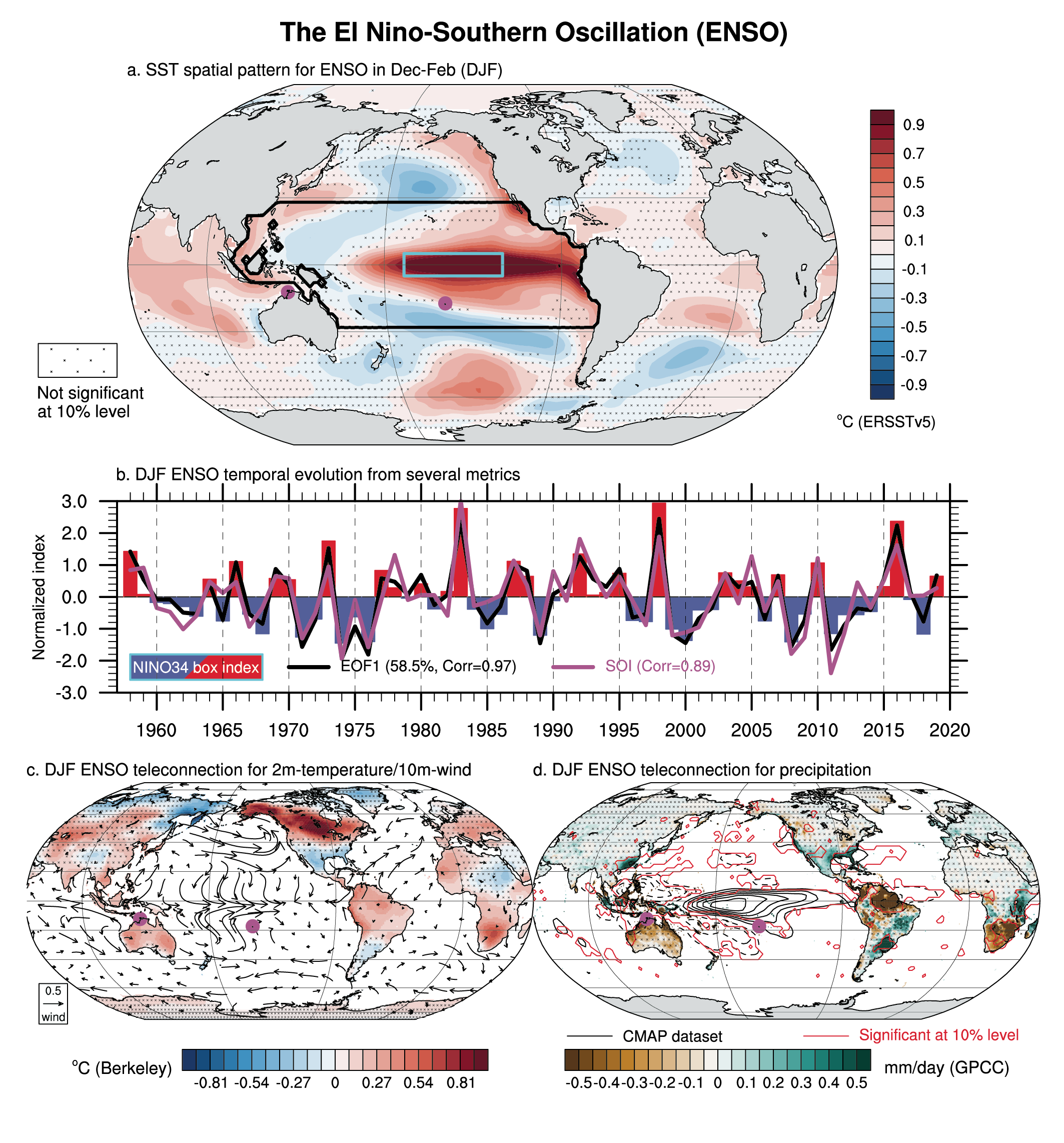Annex IV Figure 3
Figure caption
Figure AIV.3 | The boreal winter El Niño–Southern Oscillation (ENSO) mode defined by December–January–February (DJF) sea surface temperature (SST) anomalies averaged over the NINO3.4 region (5°S–5°N, 170°W–120°W, cyan box) or extracted as the leading EOF mode over the tropical Pacific Ocean (the region denoted by the black box in a) for 1958–2019 using ERSSTv5. (a) SST anomalies regressed onto the NINO3.4 time series, which is shown in (b) as red and blue bars. Black curve in (b) represents the standardized leading principal component and the purple curve stands for the SOI index. The percentage of explained variance of the leading EOF is given in the legend, as well as the correlation between all indices and the NINO3.4 time series. (c) Same as (a) but for land surface air temperature (shading; based on Berkeley Earth) and 10 m level wind (arrows; m s–1 based on JRA-55) anomalies over 1958–2018. (d) Same as (a) but for precipitation anomalies (shading based on GPCC for 1958–2016 and contours based on CMAP for 1979–2019 for every 0.5 mm day–1). Magenta dots in (c, d) stands for the Darwin and Tahiti weather station used for the SOI computation. On maps, no overlay indicates regions where the regressions are significant based on t-test accounting for false detection rates at 10% and crosses indicates no significance. Significance for CMAP precipitation is materialized by red contours in (d). All fields have been linearly detrended prior to computation.
